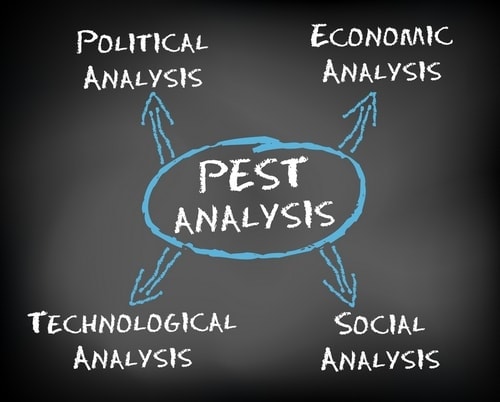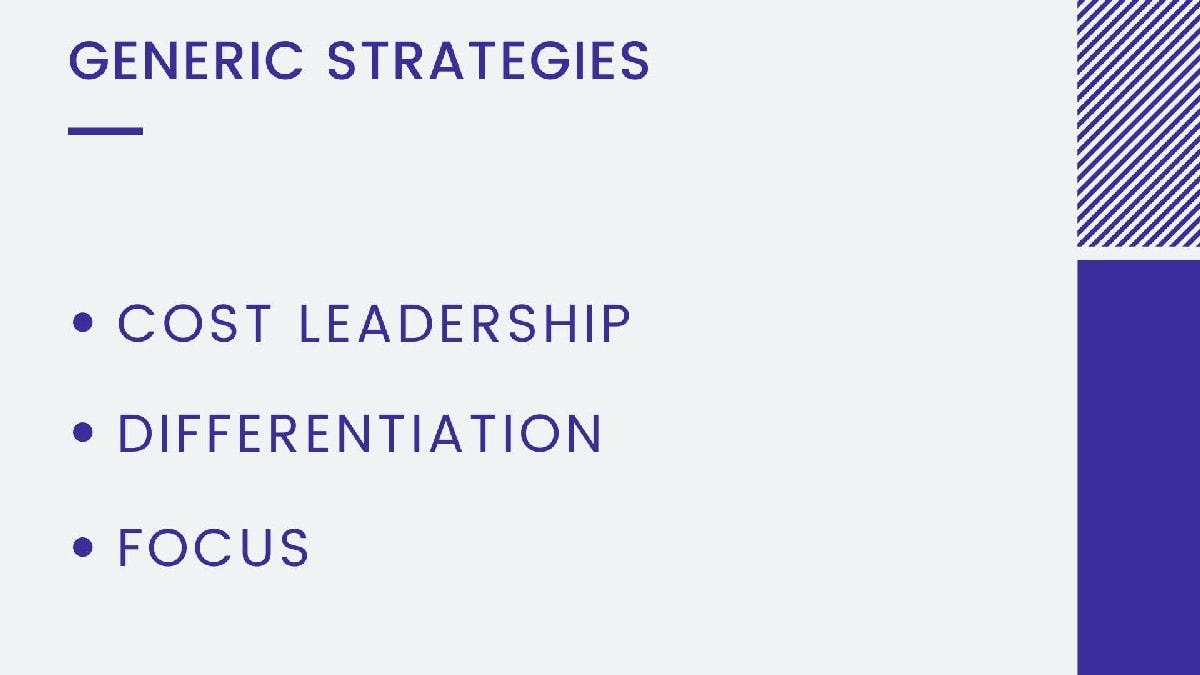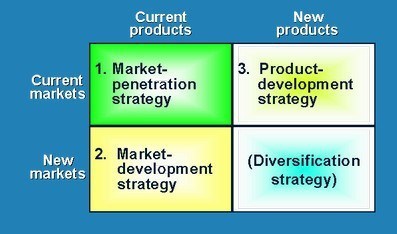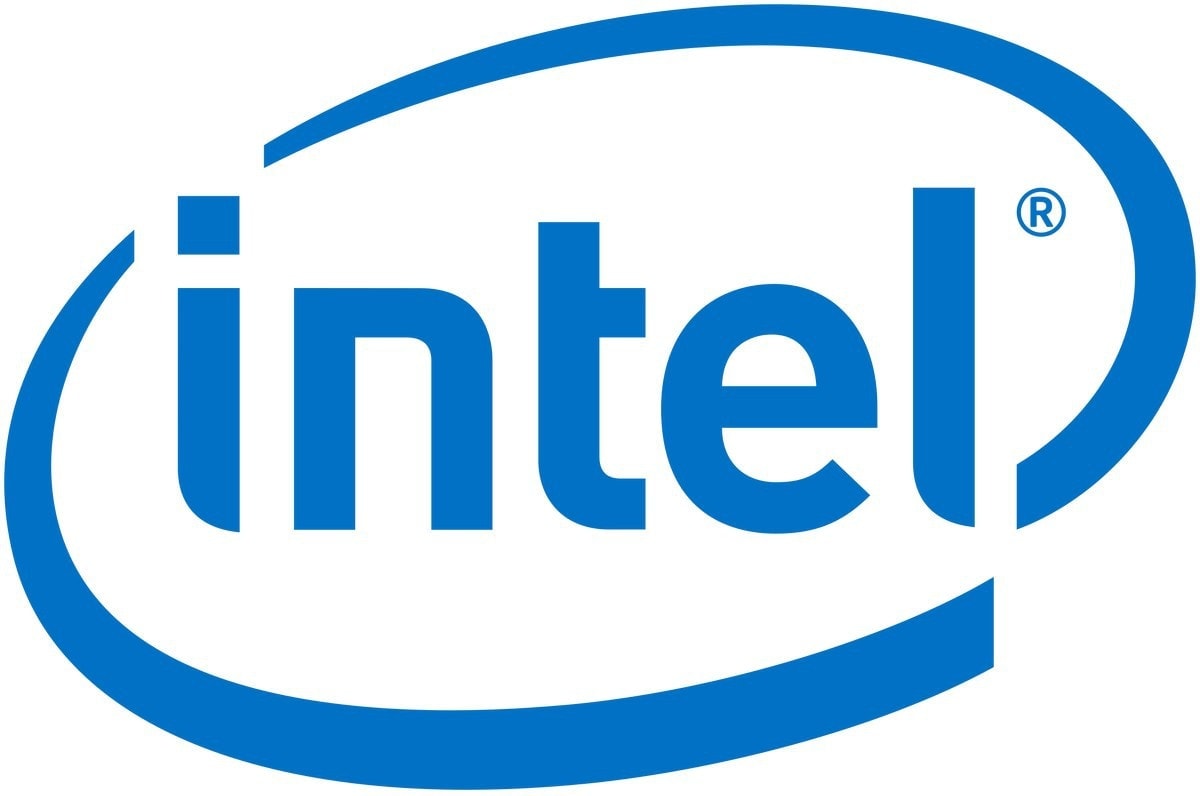
PEST analysis - Political, economical, social, technological
PEST analysis – Political, economical, sociological, technological
When we start thinking about factors that can affect our businesses, then there are a lot of variables which will need to be evaluated before taking a decision. There can be many objectives of a firm wherein the firm might want to introduce a new concept, or, conquer other markets, or, if it is a completely new business, then plan its marketing strategy. In all these cases, we will need to analyze a complex landscape consisting in political, economic, social and technological factors. It is also known as PEST analysis.
Table of Contents
What is PEST analysis?
PEST analysis stands for the analysis of political, economical, sociological and technological environment within a region or a country. The same analysis is applied to understand the overall business environment and accordingly design the organizational strategy.
Why PEST analysis is used?
Our competitors can become our future rivals. However, before considering things like marketing strategy, marketing mix or even competition, the basic factors need to be in place to establish a business. Let’s take an example of countries like Afghanistan or Iraq. If a company like Nike or Reebok has to establish itself in these countries, then the challenges will be very different then basic competition. The challenges will be in the business environment itself. And this business environment will have to analyzed first before planning the marketing strategy.
All the factors in a challenging business environment are connected through 4 different variables which are political, economical, social and technological. They are also part of the same PEST landscape connected through different ways. Basically, the PEST analysis appears as a system. In this system, the components (for example competitors as well as politics and technology) are influencing each other and based on that influence, details regarding the current market situation of the industry in which the company is or will operate is going to be revealed.
Political factors in PEST analysis
There are many laws and regulations passed in any country which depend on politics. For example – Tata nano which established a plant in west Bengal was made to leave west Bengal due to political pressure. Similarly, as explained before, the political situation of countries like China (communist nation) is controlled yet explosive. Hence establishing in countries like China will need good understanding of politics and also what will be allowed and not allowed by the government of the country. Corruption, law and order and business friendliness of the country depends on political factors only.
Economical factors in PEST analysis
The inflation rate, the foreign exchange rate, GDP, employment rate and many other economic growth indicators are strong indicators of whether or not the country is good for expansion. Any developing nation will have strong economics in place because it is of developing nature.
On the other hand, a backward nation will still find economics a challenge. Thus, it is not a surprise that developing nations are finding the most business entrants nowadays. The single explanation for this phenomenon is economical factors which are in favor of the company and hence show a positive signal during PEST analysis.
Social factors in PEST analysis
There was a time when the image and reputation of top sportswear brand Nike was tarnished due to labor and poor working condition issues. However, the company took a U turn and bounced back with many different changes. In essence, there are social factors always at play which can make or break a brand.
KFC and McDonalds face social disgrace again and again when people point out the number of cow and chicken slaughters that both the companies are doing in the name of fast food. Whenever such sentiments reach the roof, the company gets affected due to social factors. Thus, social factors within a country or a business environment play a crucial role in molding the market for the company.
Technological factors in PEST analysis
In India, the internet reach is very less and there are many companies cropping up which are trying to reach to each corner of the country. But compare this to US, UK or European countries, where internet connectivity is not at all a question. Thus, an online e commerce firm will have much higher return on investment in a country with strong bandwidth as compared to a company with low internet usage.
Thus, such companies will not establish well in countries like Kenya and Nigeria where buying power is less but so is the technology outdated. If the technology of the business environment is not upto mark, then necessary changes need to be done in the business strategy so as to adapt to he working conditions in the new environment.
Case study for PEST analysis – Example of PEST analysis
Speaking about connection between components, all the elements of the PEST analysis are connected between them. For this, let’s take as example the Specsavers company, which has acquired the Danish company Louis Nielsen through a process of horizontal integration. Louise Nielsen has 32 outlets in Denmark and Specsavers intends to double that number by next year. However, another plan of the company is to penetrate the East African market, starting with Tanzania.
Before deciding in which country to start introducing the products, Louise Nielsen had to evaluate how all the factors were connected, and whether the respective connection would prove to be beneficial or not?. Therefore, they started looking at factors from the political field to evaluate if there could be any risk or a potential conflict.
Identifying the people in charge of the countries, and the political parties they belong to, is necessary so as to get an overview of the reforms or strategy based on which the country is being driven. If they check the reforms, they can evaluate the current economic situation of the country, considering different factors such as gross domestic product, customer purchasing parity, unemployment rate, inflation, interest and exchange rate as well as the future trends of the economy.
Moving on, the company had to check if there would be any demand in the respective countries for their products (glasses). In order to find out, they needed to get more in-depth into people’s interests, customs, buying behaviors, perception about using glasses, and so on. Thus the company used Surveys, focus groups and other primary information collecting methods for gathering the necessary data.
The last factor that Louis Nielsen took into consideration was technology and how advanced the country was from the technological point of view. And in technology, there could be many other sub-factors which need to be evaluated depending on the industry you decide to operate on.
As you can see, by performing a PEST analysis you can get a helicopter view of how the situation is in the country where you consider operating. The political factors are strongly connected with the economic ones, as the reforms set by the politicians are the ones which dictate the economic growth and future projections of improvement of the country. Based on this, you can go on and analyze the society as a ‘all first’ and then by its components depending on the basis of your project, including ethics, lifestyles, advertising and publicity factors. Finally you check their technological advancement in terms of innovations, access to technology, licensing and patents, manufacturing as well as global communications.










